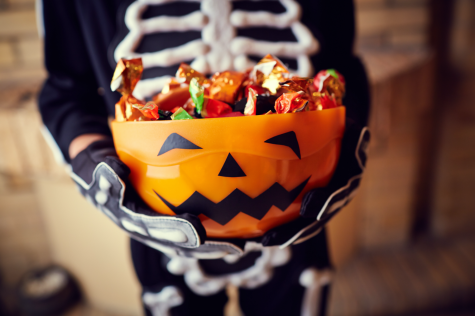Halloween Traditions
Why are witch costumes popular on Halloween?
Women who practiced divination during the Middle Ages were referred to as witches (from the Anglo-Saxon term “wise one”). Such a woman would curl up by the fire and chant, meditate, or use hallucinogenic herbs to enter a trance-like state. Superstitious folk said that these women tormented the countryside with their magical feats, flying out of their chimneys on broomsticks. This made witches one of the first “evil” monsters that were common in Europe. Since Halloween is all about dressing up as something spooky ,witches fit the bill.
Why do we go apple bobbing?
Around November 1, Romans celebrated the festival for Pomona, the goddess of fruit and orchards. Romans thought that the first individual to catch an apple with their teeth would also be the first to wed in the coming year. They also thought that the key to finding true love could be found in apple peels. The apple peeler would hurl the whole, intact apple over his or her shoulder while being twirled around. The initial of the peeler’s genuine love was shaped like the peel that landed on the ground.
Why do we carve pumpkins?
Before the typical jack-o’-lanterns made of pumpkins, turnip lanterns were used! To scare away ghosts, revelers in ancient Ireland would hollow out big turnips (or potatoes, or beets) and cut them into the appearance of a monster. They would use candles or burning coals to light the turnips from the inside. Then, in the hope that the carvings would ward off evil spirits and usher in departed loved ones, they hung the lanterns at the windows and doorways of their residences. Early 1800s Irish immigrants to the New World discovered the numerous, simpler-to-carve pumpkins as alternatives for turnips.
Why do we dress up?
Country people with superstitions would dress up for Samhain by wearing animal skins and masks fashioned of sailcloth or linen. They would dress up, walk outside, and make a lot of noise in an effort to scare away or convince bothersome spirits that they were one of them. Through the years samhain has been altered into hallows eve and later halloween. To celebrate this holiday the traditions of Samhain are particularly important. According to Irish mythology, Samhain was a time when the ‘doorways’ to the Otherworld opened, allowing supernatural beings and the souls of the dead to come into our world, while Bealtaine was a summer festival for the living. Samhain was essentially a festival for the dead.These traditions can simply be fun but they also remind people of the Celtic beliefs and are a time for remembering the dead.
Why do we trick or treat?
During Samhain, a second place was put at the dinner table as an offering for departed family members. Additionally, food was left outside, close to the threshold, to pacify pesky spirits that could otherwise torment the occupants by spilling milk jugs, for example. This was the beginning of Halloween, which is now more commonly dedicated to giving away treats. Superstition has led to a fun way to dress up as spirits or monsters.
Trick-or-treating originated in the Middle Ages when the underprivileged would beg rich people for baked sweets known as “soul cakes.” The needy agreed to pray for the giver’s departed loved ones in return for cakes.
Halloween might have originated as a Samhain holiday; however, it is now something every family looks forward to as a way to have fun and dress up. Halloween is great for the candy business as well as retail stores for fun costumes. According to the National Retail Federation (NRF), total Halloween spending in the U.S. is expected to reach $10.6 billion in 2022, topping last year’s record of $10.1 billion.

